Tick Types and Bites
Fairfield County Problematic
By Susan Dunne, Hartford Courant
With the early warm weather, Connecticut is seeing an abundance of ticks and this year there are more types, carrying more diseases than ever.
Already, Connecticut residents bitten by the tiny parasites are sending 50 to 60 ticks a day to the Connecticut Agricultural Experiment Station (CAES) for testing. “We expect that will go up to 100 to 150 ticks per day soon. We are in the midst of peak activity,” said Goudarz Molaei, Director of the Tick and Tick-Borne Diseases program at CAES.
Those are a fraction of ticks that bite residents. Molaei said about 10% of tick-bite victims send in their ticks to be examined. He encourages bite victims to use the free service that can identify the type of ticks and potential diseases it might be carrying. Up to 16 tick species now live in the state, Molaei said and five, that pick up pathogens from host animals, are particularly problematic.
The increase in tick varieties and tick-borne diseases is due to habitat changes, increased diagnosis and climate change, Molaei said.
What are these problem ticks? Each has identifiable characteristics, but when the tiny bugs are engorged with blood, differences are hard to discern. So sending in all biting ticks is a good idea. Instructions on submitting ticks are at portal.ct.gov/CAES/Tick-Office/Tick-Office/Information-on-Submitting-Ticks.
Black-legged ticks (deer ticks) represent 85% of ticks in Connecticut. (Jim Gathany / CDC)
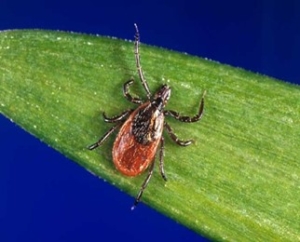
Black legged ticks
Black-legged ticks, also called deer ticks because their host is commonly a white-tailed deer, transmit various pathogens. These include pathogens that cause Lyme disease — which was diagnosed for the first time in 1975 in Lyme, Connecticut — as well as babesiosis (which can be fatal), Powassan virus, ehrlichiosis and anaplasmosis. Deer ticks represent 85% of ticks in Connecticut.
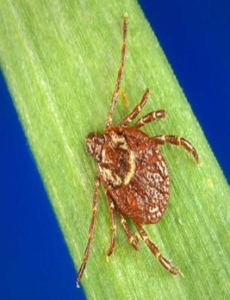
The bite of an American dog tick can lead to Rocky Mountain spotted fever. (James Gathany / CDC)
American dog tick
The American dog tick, the second-most common tick in the state, transmits a pathogen that causes Rocky Mountain spotted fever. That disease, apropos the name, is more common in the mountain states than in Connecticut. Rocky Mountain spotted fever can be fatal if it not treated early and appropriately.
The female Lone Star tick has a white spot on her back. (James Gathany / CDC)
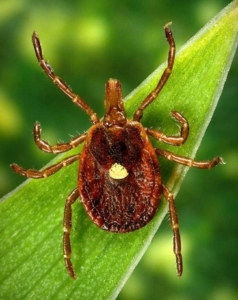
Lone star tick
The Lone Star tick isn’t from Texas; it’s called that because the female has a single white spot on her back. A few years ago it represented .2% of ticks in the state, Molaei said. Now it’s 4%, and 8% in Fairfield and New Haven counties. Disease agents carried by this tick could cause alpha-gal syndrome — which manifests itself as an allergic reaction to red meat — as well as ehrlichiosis, rickettsiosis (a spotted fever similar to Rocky Mountain) and a few others sicknesses.
A Gulf Coast tick can transmit the disease agent of rickettsiosis. (CDC)
Gulf Coast tick
The Gulf Coast tick, as its name implies, is common to the Gulf Coast of the southeastern United States. It was discovered in Connecticut in 2020. “This tick has gradually increased its population here,” Molaei said. It transmits the disease agent of rickettsiosis.
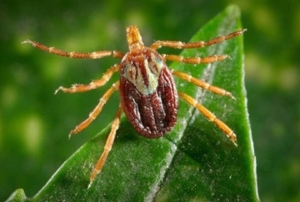
The bites of many Asian longhorn ticks can kill cattle. (James Gathany / CDC)
Asian longhorn tick
The Asian longhorn tick came to the United States in 2017 and to Connecticut in 2019. The percentage in the state is not known, but it mostly is found in Fairfield and New Haven counties. “The problem with this tick is its remarkable ability to reproduce,” Molaei said. “Female ticks can reproduce without relying on a male partner.” It can transmit up to 30 disease agents; the extent is still being researched. “The only thing we know for sure is it is a major problem for the cattle industry. In addition to causing diseases, the sheer numbers of this tick causes severe blood loss and anemia” that can kill the animal, he said.
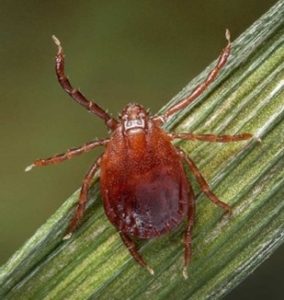
Prevention
Molaei said the entire state should be considered infested with ticks. “Regardless of where you are active, you have to protect yourself,” he said.
Some people have taken to wrapping tape, with the sticky side facing out, around their ankles to stop bugs in their tracks. But Molaei said the best strategies to prevent tick-borne woes are the classics: pesticides, repellents, covering yourself head to toe and checking yourself after outdoor exposure.
“Tick checks are still the key. They should be done immediately after coming indoors,” he said.
Pesticides can be applied to clothes and shoes, which should be left to dry for about half an hour before they are put on. Repellents, especially those including DEET, are effective when applied directly to skin.

